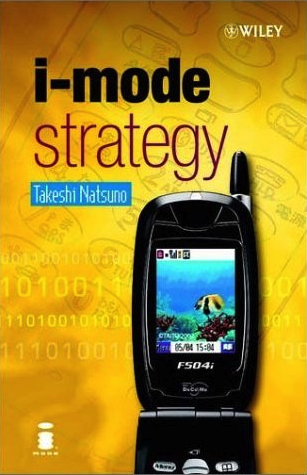Once upon a time, Japan was the world’s leader in making kick ass cell-phones. They were even called “multi-function phones” in the days before “smart phones.” We expatriates would return home with our latest cell-phones, with mega-pixel cameras or built in IC recorders installed and brandish them in front of our friends, like we were showing Zippo lighters to primitive natives still making fire with sticks.
Japan’s king of communications, NTT, even developed its own simplified Internet home pages which you could access via NTT’s special “i-mode”. (That’s right, before there was an iPhone there was i-mode, baby. And it was awesome.)
How awesome was i-mode? What the hell was i-mode? Here’s a great explanation from the technological classic i-mode strategy published to critical acclaim in 2002!

First introduced in 1999, i-mode was the world’s first smart phone for Web browsing. The i-mode wireless data service offers color and video over a variety of handsets. Its mobile computing service enables users to do telephone banking, make airline reservations, conduct stock transactions, send and receive e-mail, play games, access weather reports and have access to the Internet. It can offer a wide array of websites from internationally known companies such as CNN to very local information.
In Japan, the number of i-mode users is close to a sensational 13 million. This means that 10% of Japan’s total population are using i- mode after not even 2 years of its existence.
i-mode Strategy authored by one of the main architects behind i-mode:
* Discusses the success story of i-mode to date
* Offers highly probable future projections for the technology
Written by the most highly respected expert in the field, i-mode Strategy is an absolute must for everyone wanting to know more about NTT DoCoMo’s sustainable business model and i-mode strategy
The problem with i-mode was that it wasn’t a sustainable business model. Because when the iPhone came out in 2007, suddenly it was possible to see the World-Wide-Web (The Internet) without using i-mode or any weird Japanese proprietary formats.
Japan kept making cell-phone that weren’t compatible with the rest of the world and only worked well within the confines of Japan. The development of Japanese cell-phone and mobile technology has been compared to the evolution of life on the very isolated Galapagos Islands. Nowadays, Japan-made flip open old-fashioned cell-phones are referred to as gara-kei. It’s short for Galapagos + keitaidenwa (携帯電話/cell-phones). It’s also verbal short-hand for saying “a cheap, uncool and out of date mobile phone.”
These days, only middle-aged men, the elderly, or small children are carrying around gara-kei. Whether Japan itself is falling into Galapagos Syndrome is something I’ll let others debate. Devin Stewart explains it far better than I could.
As much as I love Japan, I’m definitely sticking with my iPhone. It works very well with almost everything. Maybe someday soon there will be an app that will let me access i-mode so I can fully experience Japanese mobile computing. One can hope.
i-mode is not proprietary. It is based on International standard (CHTML) and you can browser the Internet. I can not understand why many people who never used i-mode said that it was “closed” and “non-standard” repeatedly. Its successful paid applications and sites are walled by Docomo’s gateway so they are not accessible from the internet, but users have freedom to access the Internet, if popular sites were those paid-services, it was the users’ choice.
I do not even know how I ended up here, but I thought this post was great.
I don’t know who you are but certainly you are going to a famous blogger if you aren’t already 😉 Cheers!
[…] No, it’s just a Galapagos phone, Subaru wanted to reply, as Rom-ji nodded with an “mhm.” (TL Note: Galapagos phones are called ガラケー, or Garake which is short for Galapagos Keitaidenwa. More info here.) […]